Tree pruning is essential for maintaining trees’ health and aesthetic appeal. What months are best for tree trimming depends on various factors, including the tree species and the climate zone in which they are planted. A pruning schedule is essentially a calendar that outlines when to trim your trees throughout the year. The concept of hardiness zones, as defined by the USDA, is crucial for accurately deciding what seasons you prune.
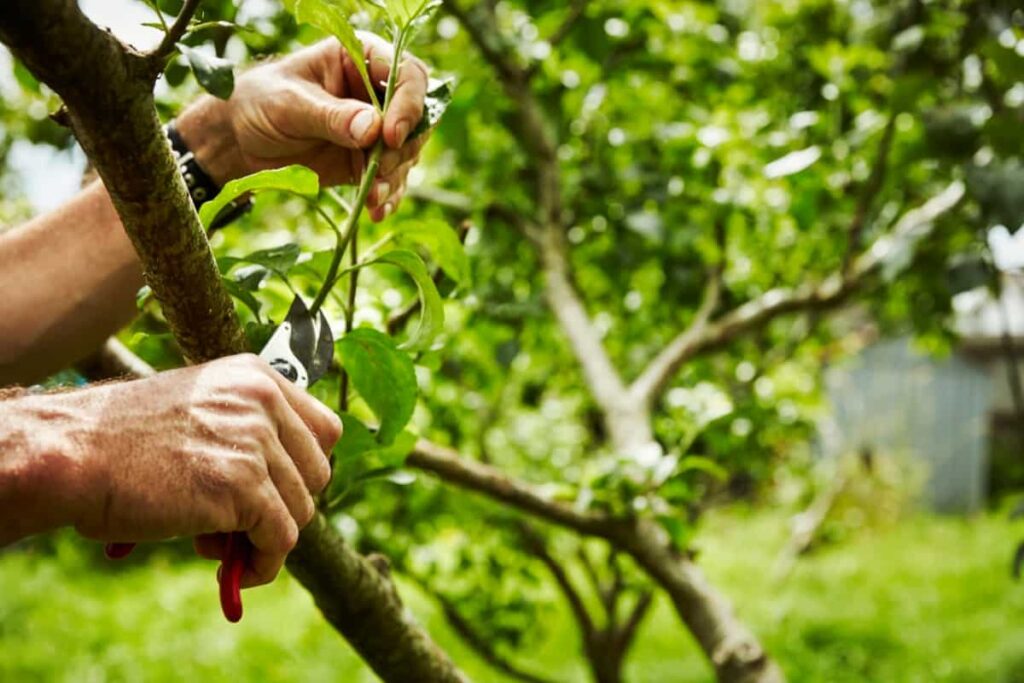
Winter and summer pruning are two key aspects of tree care that vary from zone to zone. In areas like North Carolina, the pruning calendar NC suggests specific months for different types of trees. Understanding tree trimming rules can help avoid the worst time to prune trees, such as when trees are stressed or during extreme temperatures. Knowing when it is too late to prune fruit trees or what month is the best time to prune them is vital for optimal fruit production.
Why Timing Matters in Tree Care
If you prune during the wrong season, you might damage the tree or diminish its yield, especially for fruit-bearing trees. Timely pruning also allows trees to heal faster, making them less susceptible to diseases and pest attacks. Knowing the worst time to prune trees is crucial to avoid any unnecessary stress on your trees. Timing also varies based on the type of tree, with some needing winter pruning and others benefiting more from summer pruning.
USDA Zones and Including States
When considering tree pruning across the United States, it’s crucial to take into account the USDA hardiness zones that are specific to each geographical area. In Zone 1, which mostly consists of Alaska, tree pruning is generally recommended during late winter or early spring, and you’ll want to focus on late winter to protect against the region’s extremely cold winters.
Zone 2 also predominantly includes northern Alaska, where very cold winters require similar timing. Zone 3, covering areas like northern Minnesota, benefits from milder winters, yet the late winter to early spring window remains the most optimal time for pruning. Zone 4 spans states like Montana and North Dakota, where moderate winters dictate similar late winter or early spring pruning.
Zone 4 spans states like Montana and North Dakota, where moderate winters dictate similar late winter or early spring pruning. Zone 5 includes states like Iowa and Nebraska and follows the same general guidelines due to its temperate climate. In Zone 6, which spans states like Missouri and Kansas, the climate is milder, but the late winter to early spring timeframe remains effective for most tree types.
In case you missed it: 16 Best Garden Pruning Shears: Top Rated with High Quality Within Your Budget
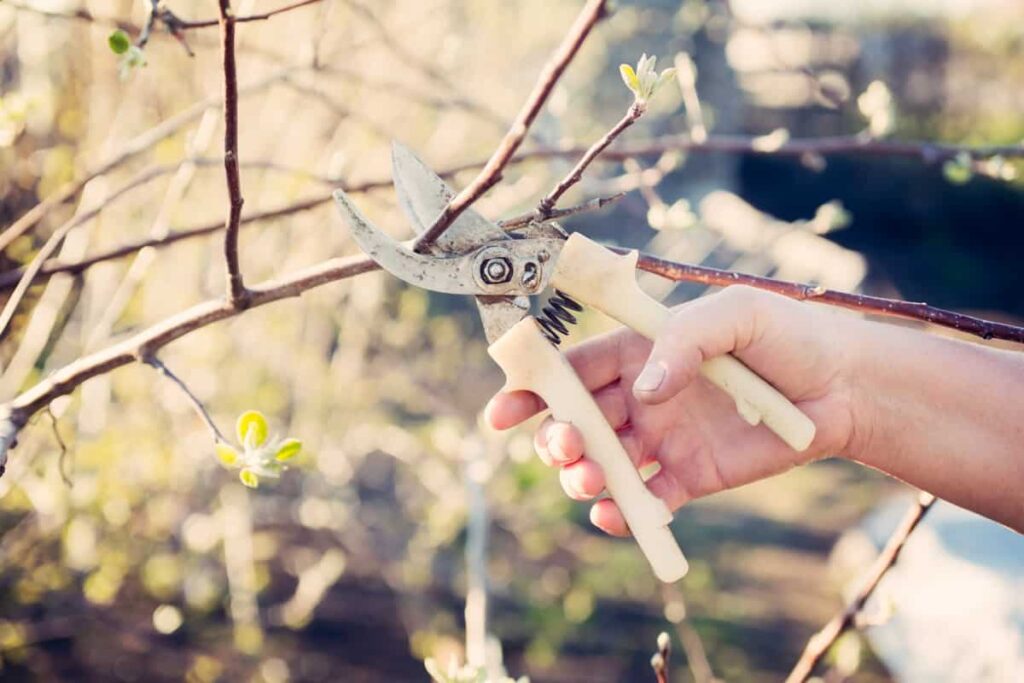
Zone 7 comprises states like Oklahoma and Virginia, which have milder climates that allow a bit more flexibility in pruning schedules. Zone 8, including states such as Texas and South Carolina, experiences mild winters, making late winter to early spring an excellent time for pruning here as well.
In Zone 9, with its subtropical climate seen in parts of Florida and California, you’ll find similar timeframes but with some tropical and subtropical trees requiring different schedules. Zone 10, mostly covering southern Florida, offers the flexibility of a tropical climate where many trees don’t go into full dormancy, allowing for more varied pruning times. Lastly, Zone 11, which primarily includes Hawaii, enjoys a tropical climate that allows for flexible pruning schedules year-round.
The Importance of Correct Pruning Techniques
Incorrect methods can lead to long-term damage, weakening the tree’s structure or causing diseases. Always make clean cuts close to a node or the trunk when pruning. Jagged or torn branches can lead to disease and decay. Tree trimming rules need to be followed, not just for the tree’s health but also for safety concerns. Remember, incorrect or excessive cutting is often more harmful than not pruning.
Zone 1: January to December Tree Pruning Chart
In Zone 1, which experiences extremely cold winters, tree pruning is generally best done during the late winter or early spring months. Winter pruning when the tree is dormant is ideal for most deciduous trees. However, spring-flowering trees should be pruned immediately after they finish blooming.
Summer pruning is less common but can benefit certain tree species that are prone to diseases that spread in wet conditions, as the drier summer weather can help minimize this risk. In this zone, the worst time to prune trees is during the onset of the winter season when trees are preparing for dormancy. For fruit trees, late winter to early spring is often the best time to prune, but you should avoid pruning once buds have formed to ensure you don’t reduce the year’s yield.
Zone 2: Monthly Tree Pruning Guide
In Zone 2, where winter temperatures can still be quite harsh, late winter to early spring is generally the best time for pruning most deciduous trees when they are dormant. For flowering trees blooming in spring, it’s advisable to wait until after the blossoms have faded before cutting. Summer pruning is not as common in this zone but can be useful for disease control in certain types of trees.
The pruning calendar for this zone may be slightly different than in colder Zone 1, but the principles largely remain the same; late winter is often the best time to prune fruit trees before new buds form, but remember that once the tree starts actively growing and buds appear, it’s usually too late for pruning without affecting the harvest negatively. Late autumn is generally considered the worst time to prune in Zone 2, as freshly cut trees may not have enough time to heal before winter sets in.
Zone 3: Trimming Calendar for Different Seasons
Zone 3 sees milder winters compared to Zones 1 and 2, and this slightly warmer climate offers a larger window for pruning activities. Most deciduous trees are best pruned in late winter, although some varieties of spring-blooming trees should be trimmed right after their flowers fade.
In case you missed it: How to Grow Desert Roses: Varieties, Soil, Planting, Pruning, Fertilizers, and Care
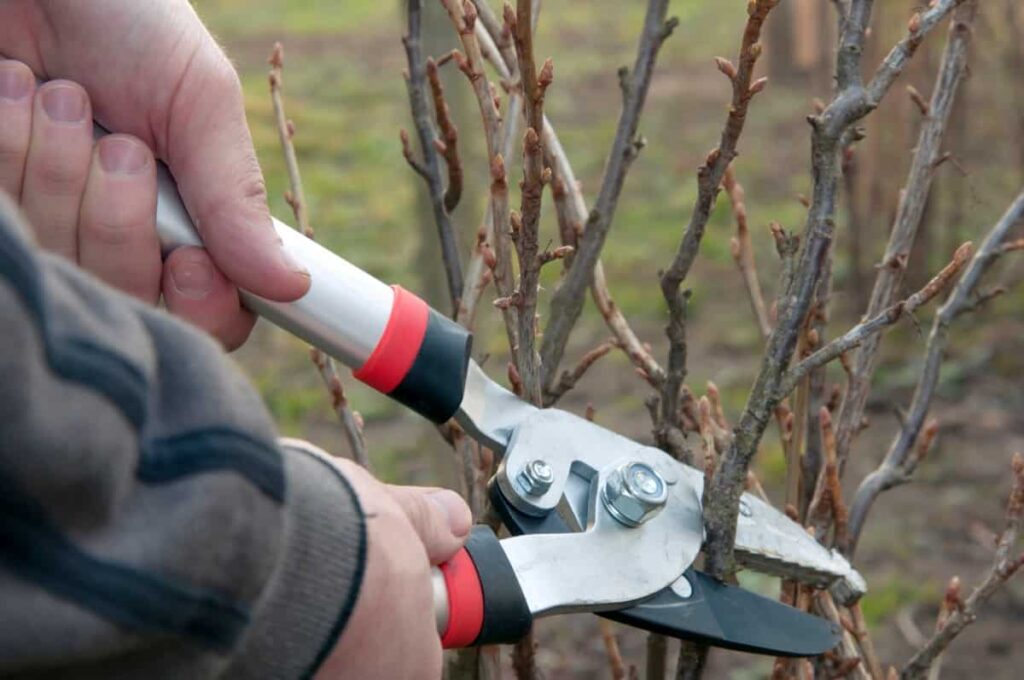
Summer pruning can be effective for some species, especially those susceptible to certain diseases that thrive in wet conditions. Like other zones, late autumn is not the best time for pruning, as it might expose the trees to winter stress. The timing for fruit trees is similar to other zones, with late winter to early spring being the most recommended periods.
Zone 4: Best Times for Tree Pruning
In Zone 4, the winters are moderate, and so are the summers. It’s usual to trim most leafy trees in late winter to early spring. For spring-blooming trees, it’s better to prune them after they finish blooming. Summer pruning is more common in this zone, especially for trees prone to diseases that are less likely to spread in dry conditions. Late autumn remains a bad time to prune as the cuts may not heal properly before winter. Much like in other zones, fruit trees are best pruned in late winter before bud break to ensure a healthy yield.
Zone 5: Month-By-Month Tree Care Guide
In Zone 5, a more temperate climate allows for a longer window for pruning activities, but the basics still apply. Late winter to early spring is usually the best time for pruning most trees when they are still dormant. Spring-blooming trees should be pruned right after their flowers fade to avoid cutting off next year’s buds.
Summer pruning can be done, particularly for those susceptible to certain diseases. As is common across other zones, late autumn is not recommended for pruning because the tree cuts might not fully heal before winter starts. It is best to follow the late winter to early spring guidelines for pruning for fruit trees.
Zone 6: Seasonal Tips for Tree Trimming
Zone 6’s climate is milder, making tree care a bit more flexible. However, the best practices largely remain the same. Late winter to early spring is a good time for pruning most types of trees. Spring-blooming trees should be pruned right after they flower, while summer is a good time for pruning disease-prone trees. Autumn pruning should be avoided, as the trees need time to heal before winter. The guidelines for pruning fruit trees align with those in other zones, typically late winter to early spring before the new buds break.
Zone 7: When to Prune Trees Throughout the Year
In Zone 7, you’re dealing with a milder climate, which means more flexibility in your pruning schedule. Despite the flexibility, late winter to early spring remains a good time to prune most deciduous trees, as they’re still dormant and less susceptible to stress. For trees that bloom in the spring, wait until their flowers fade before making any cuts to preserve next year’s bloom.
Summer pruning is quite effective here for trees prone to diseases that spread in wet conditions, as dry summer weather can help minimize this risk. Avoid pruning in late autumn as in other zones, as the trees may not have sufficient time to heal before the colder weather arrives.
Zone 8: Monthly Tree Maintenance Calendar
In Zone 8, where winters are milder, a wider variety of trees can be pruned at different times of the year without as much worry about winter stress. Late winter to early spring is still ideal for most deciduous trees, while spring-blooming trees are best pruned after they’ve flowered. During the summer, you can perform maintenance pruning, especially for trees prone to specific diseases. Late autumn is generally not recommended for pruning in this zone, as it’s better to allow trees to prepare for winter naturally.
In case you missed it: How to Make Rose Plants Bushy and Flowers Bigger: Propagation, Fertilizers, Pruning, Planting, and Care
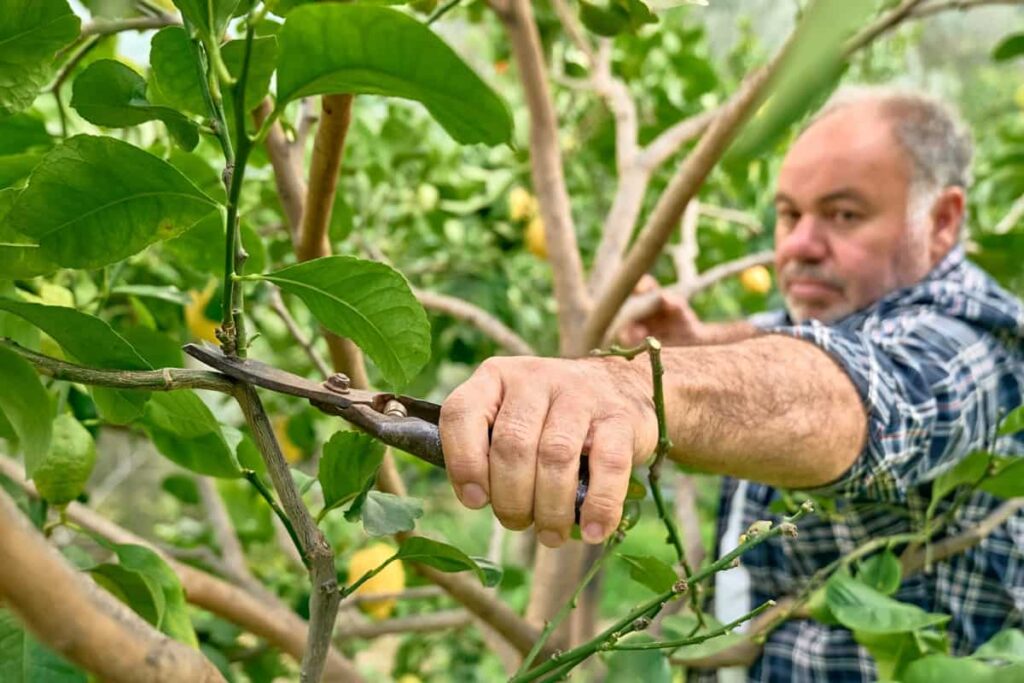
Zone 9: Trimming Guide for a Healthy Landscape
Zone 9 offers a subtropical climate, enabling a diverse range of trees to thrive. The guidelines for deciduous trees largely mirror those of cooler zones, with late winter and early spring being optimal for most types. However, some tropical and subtropical species may benefit from pruning in different seasons, so consult local guidelines.
Summer pruning can be more freely carried out in this zone, particularly for trees susceptible to disease. Late autumn remains a less-than-ideal time for pruning, as the tree should be allowed to enter its natural dormant or semi-dormant state without the stress of fresh cuts. For fruit trees, late winter to early spring is usually the recommended period for pruning.
Zone 10: Year-Round Tree Care Strategies
In Zone 10, you enter a tropical or subtropical climate where many trees don’t enter full dormancy. This allows for a more flexible pruning schedule. While late winter to early spring remains a good baseline for many tree types, some tropical species may require different timing. Summer pruning is often beneficial for controlling size and improving air circulation, which can be essential in humid climates. Late autumn is not typically a concern in this zone for most trees, but it’s always good to consult local recommendations.
Zone 11: Ideal Pruning Periods for Tropical Trees
In Zone 11, where a tropical climate prevails, trees rarely go into full dormancy, allowing for a more flexible pruning schedule. For many tropical tree species, pruning can be conducted as needed throughout the year to control size and shape. However, for deciduous trees grown in this zone, late winter to early spring is generally the best pruning time. Summer pruning can be particularly effective for tropical species that may benefit from increased light and air penetration through the canopy.
Tools and Equipment for Efficient Tree Pruning
Basic hand pruners are useful for smaller branches, while loppers and pruning saws may be necessary for thicker limbs. Pole pruners can help you reach higher branches without needing a ladder. Make sure your tools are sharp and clean to achieve clean cuts and reduce the chance of spreading diseases. Additional equipment like chainsaws or hydraulic lifts might be required for more extensive pruning tasks, especially for larger trees. Still, these should only be operated by trained professionals to ensure safety and effectiveness.
In case you missed it: 15 Gardening Mistakes to Avoid This Winter: For Vegetables, Flowers, Herbs, and Fruits
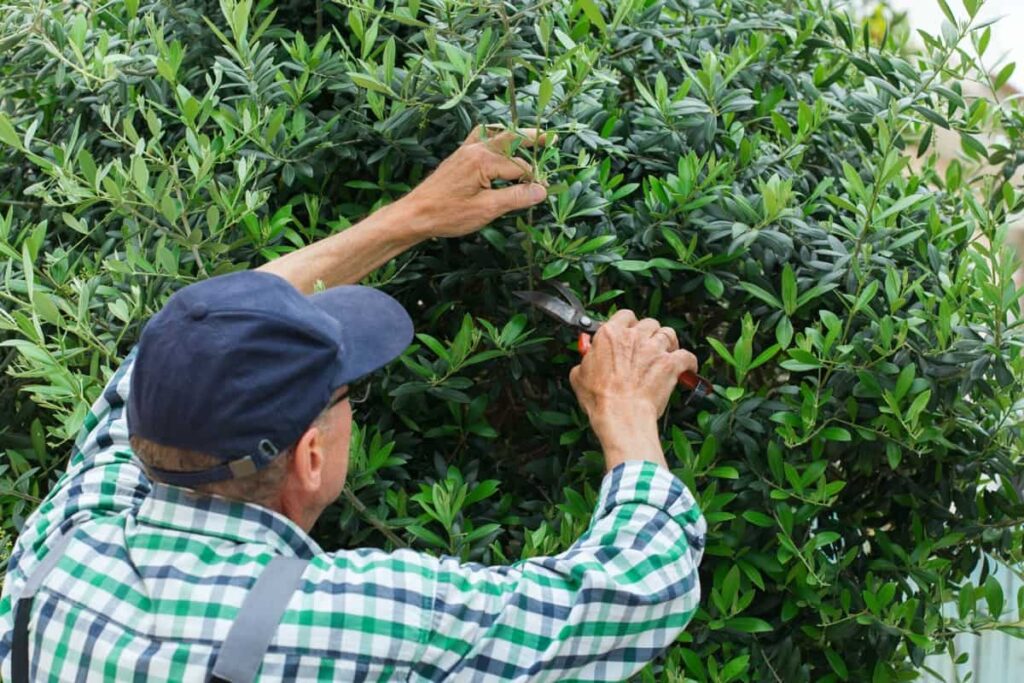
Month-By-Month Tree Pruning Chart
| USDA Hardiness Zone | Optimal Time for Pruning Deciduous Trees | Best Time for Pruning Spring-Blooming Trees | Special Considerations | Worst Time to Prune |
| Zone 1 | Late Winter/Early Spring | Right After Flowering | Extremely Cold Winters | Onset of Winter |
| Zone 2 | Late Winter/Early Spring | Right After Flowering | Very Cold Winters | Late Autumn |
| Zone 3 | Late Winter/Early Spring | Right After Flowering | Milder Winters | Late Autumn |
| Zone 4 | Late Winter/Early Spring | Right After Flowering | Moderate Winters | Late Autumn |
| Zone 5 | Late Winter/Early Spring | Right After Flowering | Temperate Climate | Late Autumn |
| Zone 6 | Late Winter/Early Spring | Right After Flowering | Mild Climate | Late Autumn |
| Zone 7 | Late Winter/Early Spring | Right After Flowering | Milder Climate | Late Autumn |
| Zone 8 | Late Winter/Early Spring | Right After Flowering | Mild Winters | Late Autumn |
| Zone 9 | Late Winter/Early Spring | Right After Flowering | Subtropical Climate | Late Autumn |
| Zone 10 | Late Winter/Early Spring | Right After Flowering | Tropical Climate | Varies |
| Zone 11 | As Needed | As Needed | Tropical Climate | Varies |
In case you missed it: 15 Best Apple Tree Fertilizers: Liquid and Organic Nutrients for Healthy Fruit Yield
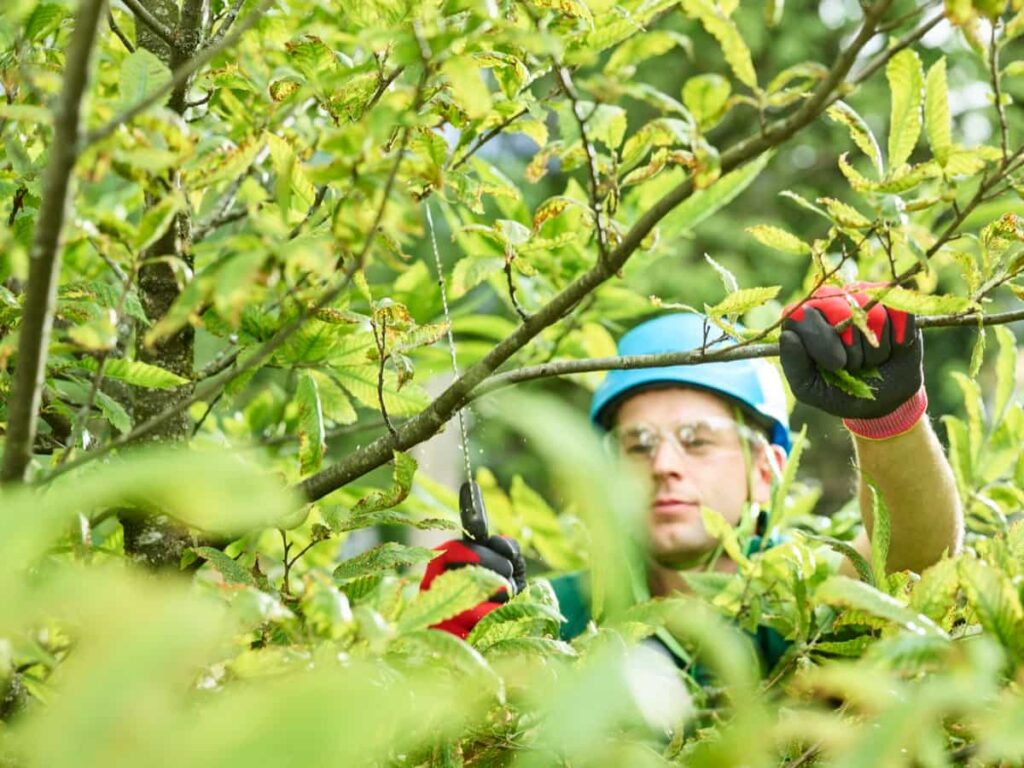
Conclusion
Understanding when and how to prune trees is crucial to year-round tree care. Proper tree pruning has numerous benefits, from maintaining a tree’s overall health and structural integrity to enhancing its aesthetic appeal.
- Management Pests and Diseases in Your Cotton Field
- Sheep Farming Business Plan for Beginners
- Aquaponic Farming at Home: A Step-By-Step Guide
- Profitable Village Farming Business Ideas in 2024
- High-Yield Aquaculture: Fast-Growing Fish for Farming
- Effective Fish Pond Construction Techniques for Beginners
- Irrigation and Water Management in Pineapple Farming
- Blossom to Harvest: Mastering Flowering and Pollination in Papaya Farming
- Pig Fattening Essentials: From Selection to Sale for Beginners
- Raising Wagyu Cattle: A Complete Guide for Premium Beef Production
- Soil Types and Their Water Holding Capacity
- Optimizing Irrigation Schedules for Coconut Groves for Enhanced Yield
- Espresso Your Garden: Coffee Grounds for Healthier Acid-Loving Plants
- The Best Soil Mix for Snake Plants: How to Mix Your Own Snake Plant Soil
- Green Thumb Success: Expert Tips for Cultivating Greenhouse Beans All Year Round
- Bloom All Year Round: The Ultimate Guide to Indoor Hyacinth Care
- Eco-Friendly Gardening: How to Make Liquid Fertilizer from Kitchen Waste
- Ultimate Guide to Grow Anise in Pots: Explore Seed Propagation to Harvesting
- Guide to Raising Chester White Pigs: Discover Breed Facts to Growth Management
- Mastering the Elegance: The Ultimate Guide to Weeping Cherry Tree Care, Planting, and Maintenance
- Ultimate Guide to Planting Garlic in Grow Bags: Growing Strategies for Beginners
- How to Fix Spider Plant Leaf-Related Problems: Natural and Organic Remedies
- 10 Reasons Why Your Tulsi Plant is Shedding Leaves: Home Remedies and Solutions
- Optimizing Growth and Yield: The Advantages of Palm Bunch Ash Fertilizer
- Utilizing Neem Oil Extract as a Natural Pesticide for Hydrangea
- From Soil to Harvest: Various Ways in Which Farmers Can Use AI Tools
- Steps to Encourage and Induce Citrus Flowers: A Comprehensive Guide
- How to Fix Snake Plant Leaf-Related Issues: Natural and Organic Remedies
- Transform Your Garden into a Fragrant Oasis with Raat Ki Rani (Night Blooming Jasmine)
- Discover the Ideal Chicken Breeds for Philippine Farms
- How to Create a Poultry Egg Farm Business Plan for Profits
- Grow Lemon Cucumbers Like a Pro: Insider Techniques for Bountiful Yields
- Ultimate Guide to Caring for Your Pink Princess Philodendron: Tips for Thriving Variegation
- Areca Nut Profit Per Acre: Calculating Yield and Cost of Cultivation
- How Kaveri Chicken is Becoming a More Profitable Breed in Indian Backyards
- Transform Your Barn: 9 Steps to Convert a Horse Stall into a Chicken Coop
